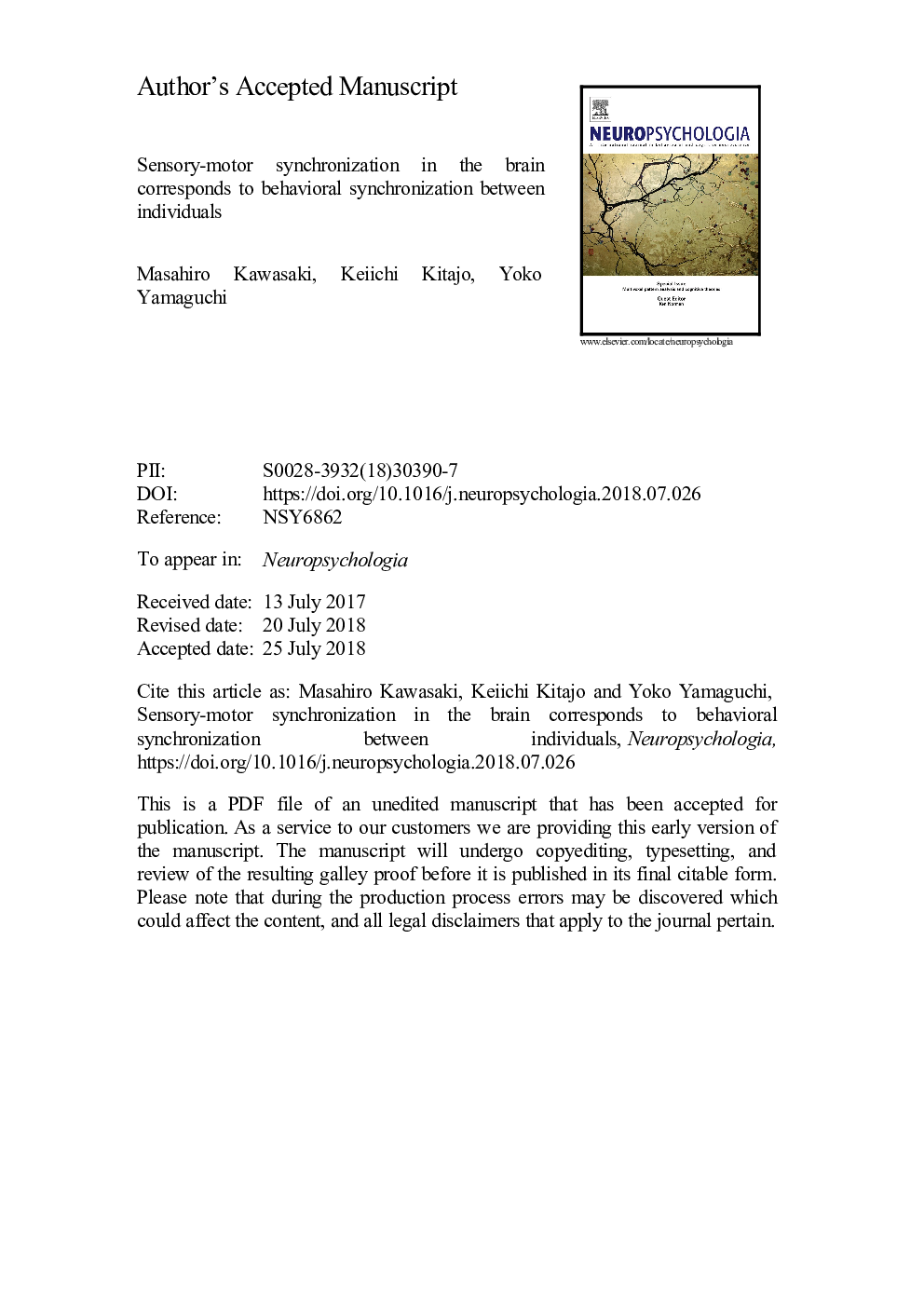| Article ID | Journal | Published Year | Pages | File Type |
|---|---|---|---|---|
| 7317079 | Neuropsychologia | 2018 | 21 Pages |
Abstract
Behavioral rhythms between individuals are known to spontaneously synchronize through social interactions; however, it remains unclear whether inter-brain synchronization emerges with this behavioral synchronization in the case of anti-phase coordination with other's behavior (e.g. turn-taking). In this study, we simultaneously recorded electroencephalograms (EEGs) we simultaneously recorded electroencephalograms (EEGs) from 2 participants as 1 pair (in total, 34 right-handed participants as 17 pairs) during an alternate tapping task in which pairs of participants alternated tapping a key with their right finger. Participants sat facing computer displays and were asked to match their partners' tapping intervals using visual feedback that was presented on the displays. Based on their ability to synchronize, we divided participants into Good performance and Poor performance groups. In both groups, wavelet analyses of EEG data revealed alpha-(approximately 12â¯Hz) and beta-(approximately 20â¯Hz) amplitude modulation in the left motor areas. Interestingly, both alpha and beta amplitudes were correlated between individuals from the Good group, but not from the Poor group. Moreover, while the Good group showed intra-brain and inter-brain alpha-phase synchronization (about 12â¯Hz) within the posterior brain areas (i.e., visual areas) and the central brain areas (i.e., motor areas), the Poor group did not. These results suggest that inter-brain synchronization may play an important role in coordinating one's behavioral rhythms with those of others.
Related Topics
Life Sciences
Neuroscience
Behavioral Neuroscience
Authors
Masahiro Kawasaki, Keiichi Kitajo, Yoko Yamaguchi,
